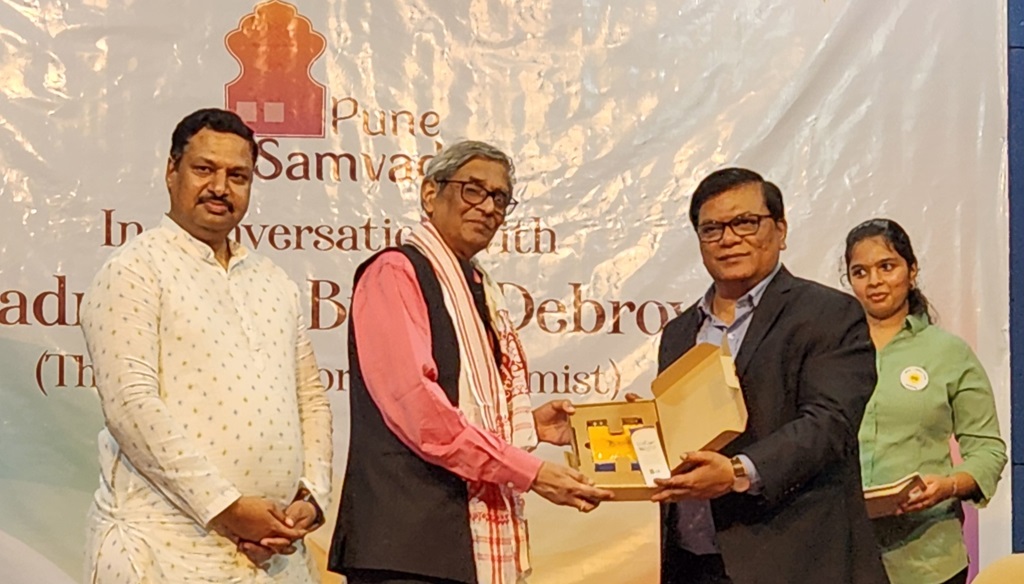Read Original Text of Mahabharata and Ramayana to understand the Dharma – Bibek Debroy

The event was organised over the last weekend by Pune Samvad & Arka Student Forum and was chaired by Dr Milind Kamble, Founder Director of the Dalit Indian Chamber of Commerce and Industries (DICCI) along with Manoj Pochat, Coordinator of Pune Dialogue. Debroy provided guidance on the topic “Karma, Dharma, and Modern Dilemmas: Mahabharata Characters Reimagined,” offering attendees a thought-provoking analysis of these classical texts.
Debroy specified that all his references drawn from the Ramayana were from the critical version of Valmiki’s Ramayana brought out by the Oriental Research Institute in Baroda and the reference of Mahabharata was from the critical edition that was brought out by the Bhandarkar Oriental Research institute (BORI) Pune
Not wanting to get into elaborate deliberation, he spoke on a few aspects of Dharma, Varna, Sadachaar and Grihastha Dharma, Dr Debroy said, “Dharma is not religion. The word Dharma and its meaning depends on the context and in the broad sense is what holds our society together.” The second aspect he spoke on was the Varnashrama System (Varna System), and how as per our epics, it is not a hereditary system, but a chosen one based on functional classifications. The hereditary aspect was thrust upon Indians in the 1871 census wherein the word caste was borrowed from the Portuguese.
The third aspect he spoke on was Sadachar and how it was different from Sanatan Dharma. Sadachar was about contextual beliefs which are society specific. He then elaborated on the final aspect of Grihasta Dharma- the individual dharma citing examples of how at any given instance Lord Ram, Bhishma, Arjuna and Dronacharya stuck to their individual dharma which was often misinterpreted by people today.
Concluding his speech, Dr Debroy pointed out that people who chaperoned women’s rights should look beyond the work of great poet Kalidasa’s portrayal of Shakuntala and consider her portrayal as given in the Mahabharata. He also informed that the Mahabharata contained numerous discussions about women’s rights, suggesting that the ancient texts offered valuable insights into the progressive attitudes of the time, far more liberal than the ones we have today.








